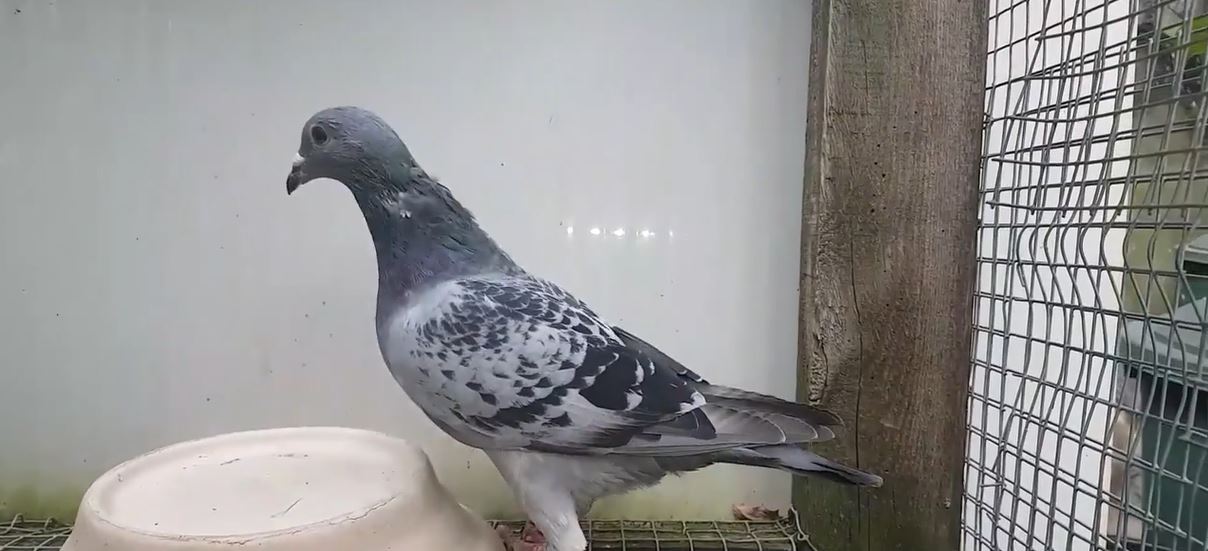Pigeon Trapping: How To Trap A Pigeon

If there are pigeons on your property, they can quickly become a pest. These birds will spread disease in some situations and no matter where they live, they will cover the area with nesting materials, droppings, and feathers. Because of this, many homeowners prefer not to have these animals on their property and trapping is one of the ideal methods to get rid of them. Your first line of defense should be preventative methods, but if they don't work, you will be left with trapping. Even if you have experience trapping other animals, trapping a pigeon will pose unique challenges because these animals fly. This means you have to keep a few things in mind that would not be an issue with other nuisance wildlife.
Trap Overview
You can find a very large number of pigeon traps available. You can easily find small traps in stores or online, but if you plan on trapping an entire flock that has moved onto your property, you will need a larger one. In some cases, you may even need to have someone build a trap that meets your requirements in terms of the number of pigeons and the location.
Live Traps
Live traps are the most common and most recommended types of traps used to catch pigeons. They are typically large cages that have a single entrance. This entrance will give the pigeons an area where they can reach the bait, but be unable to get back out. In the case of a large flock of pigeons in your attic, home, or business, you may need a very large cage trap that can fit within the area and trap tens to hundreds of birds.
Lethal Traps
You can find lethal pigeon traps on the market, but these are not typically recommended. Most people who want to kill the pigeon as opposed to relocating it will still use a live trap. Instead of baiting it with standard bait, however, they will use poison. This ensures that the dead pigeons are in a location you can reach, the trap. If you were to simply use poison out in the open, any animal could reach it and a pigeon carcass could end up hidden.
Baits
Pigeons are highly intelligent animals so you need to start planning in advance if you want to catch them. This means laying out bait in the area you intend to place the trap for about a week. Be sure not to put the trap out during this time as you are simply getting the pigeons used to the idea that they can find food in this area.
There are two main choices when it comes to bait: food or poison. If you plan on killing the pigeon with poison, then you will still want to attract them with a food source to help them get used to the area. Then, you will place a pigeon poison inside the trap as bait. In any other case, you will simply want to spread out some pigeon food, such as corn. This is also a great bait to place inside the trap.
Placing The Trap
When choosing an area for your pigeon trap, you will want to pick a spot where the pigeons are likely to be the only animals or birds in the area. Remember to condition the pigeons to like the area with bait ahead of time.
If you place a live trap in an area, you will need to check it on a regular basis to make sure no other pests or birds have gotten caught. If you use poison bait, you will need to constantly supervise the trap. Otherwise, another animal may be killed by the poison. The need for constant supervision is one of the reasons most people prefer to simply trap and relocate live pigeons as opposed to killing them.
What To Do With The Pigeons
After you have trapped the pigeons, you need to still be cautious. Remember that these birds can transmit disease, either by contact or through their droppings. Because of this, you want to minimize contact with the pigeons at all times and wear thick clothing as well as thick gloves to avoid exposure and contamination.
Before you release the pigeons into the wild, take the time to check your local regulations and laws. Regulations vary from state to state with some offering an organization that will take the bird off your hands and release it. Others will ask you to release them at a certain distance or particular location. Yet other areas will require the pigeons to be humanely euthanized.
If you are relocating a pigeon, always make sure to seal up your home and take other preventative measures so new ones do not take its place. This will also prevent the pigeon from re-entering your home since the birds have great homing instincts. To ensure you trap all pigeons and keep them away, consider hiring a professional to help you.
Read the How to get rid of birds page for helpful information and to learn more about Pigeon Trapping: How To Trap A Pigeon

